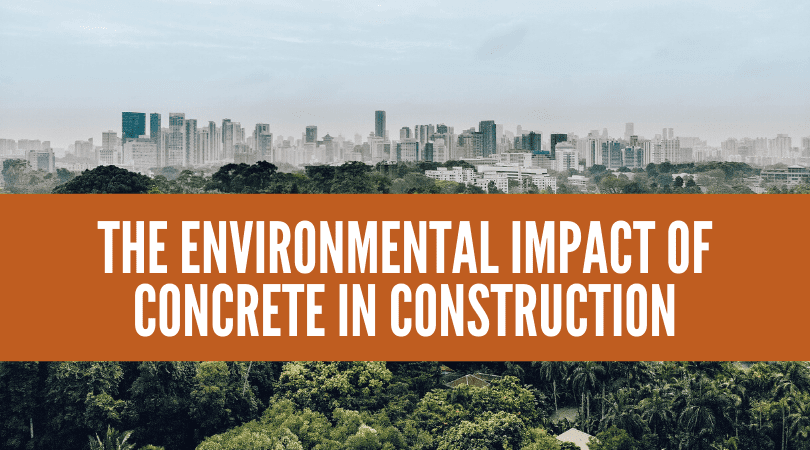Methods for mitigating the environmental impact of concrete production
Cement, aggregate, and water are the three primary constituents of concrete. Concrete
production necessitates a substantial amount of energy and emits a substantial amount of
greenhouse gases. For instance, it is estimated that 1.6 billion tons of concrete are produced
annually, resulting in 7% carbon dioxide emissions, depletion of natural resources, and a
substantial amount of waste disposal.
Reducing the environmental impact of concrete is necessary for promoting sustainable
building practices and mitigating the negative effects of its production. Here are some
efficient methods for accomplishing this:
- Utilize Alternative Cementitious Materials: Traditional cement production emits a
substantial quantity of carbon dioxide, which contributes to greenhouse gas
emissions. Consider using alternative cementitious materials such as fly ash, slag,
and silica fume to mitigate this effect. These materials, which are byproducts of
other industrial processes, can partially supplant cement, thereby reducing the
concrete’s overall carbon footprint. - Utilize Supplementary Cementitious Materials (SCMs): Supplementary
Cementitious Materials, such as pozzolans, rice husk ash, and calcined clays, can be
incorporated with cement to improve its performance and reduce cement content.
This not only reduces the impact on the environment but also increases the
durability and strength of concrete. - Optimize Mix Design: By proportioning aggregates, cement, and water precisely, it is
possible to accomplish the desired strength and durability while simultaneously
minimizing environmental impact. - Recycled aggregates: Use such as crushed concrete, reduce the demand for natural
aggregates and divert construction detritus from landfills. - Utilize High-Performance Concrete: Utilizing high-performance concrete can result
in narrower sections and reduce the total volume of concrete required for a project.
In addition to reducing steel reinforcement needs, high-strength concrete can
further reduce environmental impact. - Utilize Carbon Capture and Utilization (CCU) Technologies: Cement kilns and
concrete production facilities can use carbon capture technologies to capture carbon
dioxide emissions. The captured CO2 can be utilized in a variety of industrial
processes or perpetually stored, thus reducing the carbon footprint of concrete
production. - Encourage Sustainable Construction Methods: Encourage the use of sustainable
construction methods, such as precast and prestressed concrete, which enable for
more efficient material usage and reduce construction waste. In addition, design
structures with extended service lives to reduce the frequency of demolition and
reconstruction. - Opt for Low-Carbon Transport: Minimize the carbon emissions associated with
transporting concrete by procuring local materials whenever possible. Reducing
transportation distances helps reduce the environmental impact of concrete
construction. - Concentrate on Efficient Water Management: The production of concrete requires
substantial quantities of water. Implement water management strategies to recycle
and reuse water, thereby decreasing water usage and mitigating environmental
impact. - Educate and Raise Awareness: Educate stakeholders, such as designers, contractors,
and clients, on the necessity of reducing the environmental impact of concrete.
The construction industry can make significant advances in reducing the environmental
impact of concrete and contributing to a more sustainable built environment by combining
these strategies.
Disclaimer: This content is provided solely for your review. Erusu Consultants takes no liability for this article. The reader is advised to form their own opinion. Please consult a Structural Engineer before making any final decisions.






